Of all the bloodsucking parasites, leeches are probably my least favorite. You’ve got to touch their weird slimy bodies to detach them and there’s usually a lot of blood involved. But, because a lot of the waters I swim in while camping often have leeches, removing leeches is something I’ve learned to deal with.
If you are going somewhere with leeches (or have one attached to you right now!), here’s what you need to know about getting a leech off your body safely.
Want this information (and much more!) in PRINTABLE format?
Get my Camping Cheat Sheets: An Illustrated Manual
Where Do Leeches Live?
Leeches are found on all continents except for Antarctica. They are sometimes on muddy land or in oceans but they usually prefer shallow bodies of fresh water. That means ponds, lakes, marshes, streams and riverbanks.
Sometimes you will see leeches swimming around in the water. Most of the time though, leeches hide in mud or rocks at the bottom of the water. They are very good hiders and you probably won’t notice them until they’ve come out of hiding to suck your blood.
How Do Leeches Get On You?
Leeches are attracted to movement. When you enter leech-infested waters, they will swim towards the movement. I’ve found that if I swim very quickly, the leeches don’t have time to attach to me. However, if I tread water or float around, the leeches easily get on me. Likewise, if I stick my feet or wade in leech waters, they will attach to my feet.
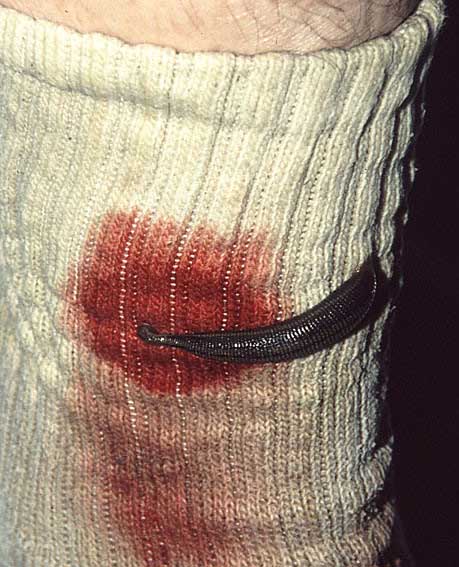
Leeches can even bite through your clothing!
Are Leeches Dangerous?
Generally, leeches are not dangerous. They usually bite on the outside of the body, feed for 20 to 60 minutes, and then drop off. However, there are some rare cases where people experience severe bleeding from leeches which got inside their bodies. There are also some situations where leeches could pass diseases to their hosts.
Do Leeches Carry Disease?
Yes, leeches do carry diseases. Studies have shown that leeches carry various parasites, bacteria and viruses – including HIV and hepatitis B. The good news is that the diseases usually aren’t found in the saliva glands, so leeches rarely transmit these diseases to their hosts. However, if the leech is irritated or squeezed during removal, the leech might regurgitate the contents of its guts into the bite – potentially causing disease. This is why proper leech removal is so important.
How to Remove a Leech Safely: 3 Methods
Method 1: Wait for the leech to fall off on its own
If you can stomach it, the best way to remove a leech is to just wait. They will usually finish feeding in 20 to 60 minutes and fall off on their own afterwards. There is almost no chance that you will get an infection or end up with the mouthparts stuck in your skin if you can wait it out.
Method 2: Detaching the leech
Because having a leech on you is pretty gross, this is the method I usually use.
- Remain calm. Resist the urge to grab the leech and rip it off your body!
- Identify the mouth of the leech. Leeches usually have two suckers. The mouth sucker has jaws and is the part which bites you. It is typically narrower. The posterior (back) sucker is used to hold on. It is typically wider.
- Slide a flat object under the mouth sucker. Working from the side of the mouth, slide the flat object on your skin towards the sucker. This should break the leech’s suction. I find a credit card works best for this. You can also use your fingernails.
- Toss the leech aside. As soon as the leech’s mouth detaches, grab the leech and toss it aside. Do this quickly so it can’t reattach itself.
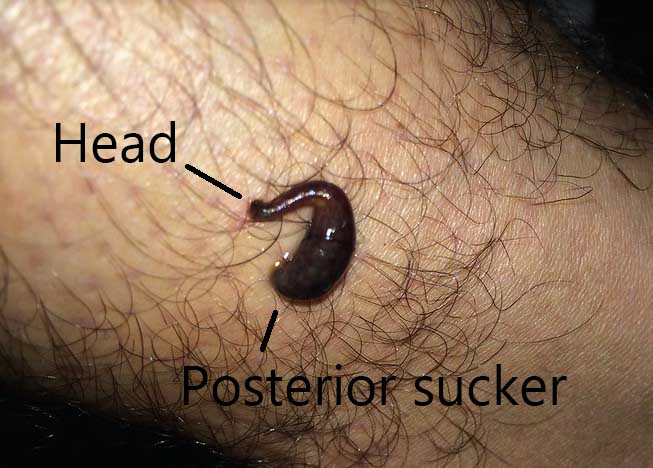
Method 3: Detaching the Back Sucker
Apparently leeches sometimes fall asleep while sucking. In these cases, they can be on you for hours without falling off. In these cases, you can trick the leech into detaching.
- Locate the rear sucker. It is the thicker, wider side of the leech.
- Pull off the rear sucker. You can do this with your hands or with a flat object.
- Wait for the leech to detach. When you detach the rear sucker, the leech will think it is about to fall. It will often then release its mouth sucker, allowing you to fling it aside. If this doesn’t work, you’ll need to use method #2.

Can You Use Salt to Remove a Leech?
Even though it is often recommended, you should not use salt to remove a leech. Applying salt irritates the leech and increases the likelihood that it will regurgitate into the wound when detaching from your skin – thus increasing the likelihood of infection. Saline solution is sometimes used to remove leeches, but only in cases where the leech is attached somewhere difficult to reach, like inside the nose or ear canal. In these situations, the leech should be removed by a medical professional.
Other Unsafe Ways to Remove a Leech:
Just like with tick removal, the methods of removing leeches below are unsafe because they increase the chances that the parasite will regurgitate into the wound or the mouth parts will remain in the skin.
Do NOT:
- Pull the leech off. The leech mouthparts could remain in your skin. While usually not dangerous, leech mouthparts stuck in your skin can cause irritation and possibly infection.
- Apply vinegar, alcohol, or turpentine to the leech.
- Burn the leech or apply heat. Such as with the end of a match.
How to Remove Leech Teeth Stuck in the Skin
Leeches have three jaws that form a Y shape. Each jaw has around 100 teeth that move back and forth to bite the skin. If you rip the leech off of your skin, the leech jaws might tear off and get stuck in your skin. You probably won’t be able to see the leech mouthparts in your skin but it might cause irritation and a lump.
There’s no smart way to remove the hundreds of tiny leech teeth stuck in your skin: you just have to wait for your body to push them out on its own.
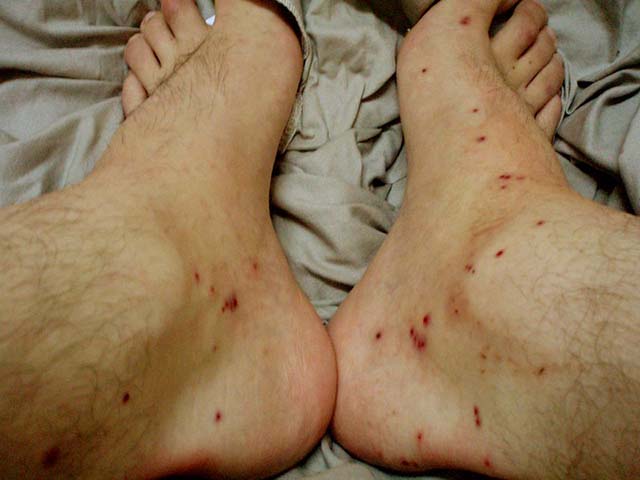
There are probably teeth embedded in some of these leech bite wounds.
Can Leeches Get Inside Your Body?
Yes, leeches can sometimes make their way inside your body. When this happens, it is usually inside a person’s nose or ears. Leeches sometimes get into the vagina or anus too, especially if you were swimming in leech-infested waters naked. Once inside the body, a leech can stay there for weeks. One sign that you have a leech inside your body is unexplained bleeding from an orifice.
How to Remove Leech from Nose
Ideally, a medical professional should remove leeches inside your nose. If you can’t get to a doctor though, you can use these methods to remove a leech in your nose yourself.
- Apply salt to the leech to encourage it to detach.
- Then use forceps to grab the leech and pull it out.
- If the leech is getting bigger as it feeds and you are worried it will obstruct breathing, then carefully stab through the leech with a small knife. There will be lots of blood but the leech will die, making it easier to remove. The jaws might remain attached though, so expect some irritation in the nasal canal.
How to Remove a Leech in the Ear
Like with other internal leeches, leeches in the ear should be done by a medical professional. If you don’t remove it properly, it could damage the sensitive membranes in the ear. In case you can’t get to a doctor:
- Drip saline solution into the ear. If part of the leech is visible, you can apply salt to it directly.
- The leech should stop moving and bleeding should gradually stop. When it does, use forceps to gently remove the leech.
- If the leech doesn’t stop moving after applying saline solution, then apply glycerin ear drops (glycerin phenique). Once the leech stops moving and bleeding stops, pull the leech out with forceps.
I keep these saline solution ampules in my camping first aid kit. While I haven’t had to use them on leeches, they are also good for cleaning out small wounds or debris in the eyes.
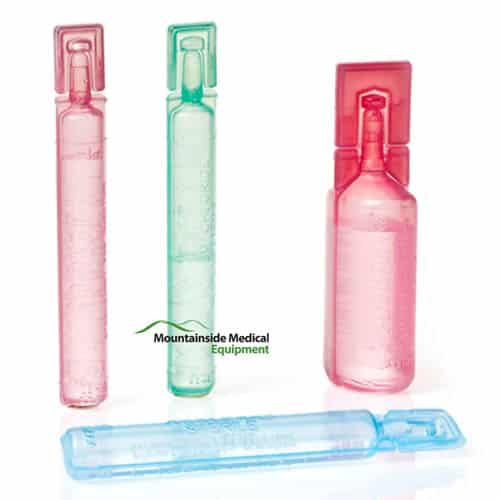
*Here’s what else I keep in my camping first aid kit for treating everything from leech bites to stomach bugs.
Treating a Leech Bite
After removing a leech, you shoud:
- Clean the wound with saline solution or water.
- Apply an antiseptic to the wound. Hydrogen peroxide, Povidone iodine and antibiotic wound ointments are all suitable options.
- Apply a sterile dressing to the wound and secure it in place with a bandage.
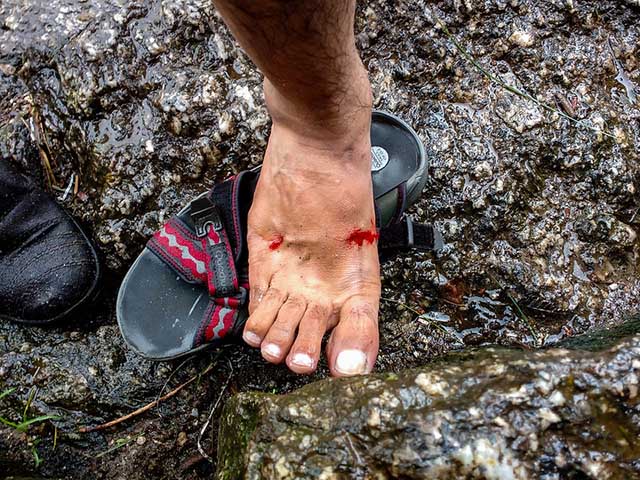
It usually doesn’t hurt, but leech bites can look pretty dramatic because of all the blood
Leech Bite Bleeding Like Crazy
Leeches can drink up to 1ml of blood per minute (that’s 4 teaspoons in 20 minutes). When they bite, leeches release various anticoagulant substances into the skin to improve blood flow. It can take a long time before these substances wear off. So, it is normal for a leech bite to bleed like crazy even after the leech is removed. Usually the bleeding will stop within a couple hours. However, the wound can bleed for up to 7 days – especially if it was attached to mucus membranes.
If a leech bite won’t stop bleeding:
- Clean the bite site with hydrogen peroxide. This helps remove the anticoagulant substances from the wound.
- If you have one, apply a hemostatic (blood-clotting) dressing on top of the wound.
- Use a compression bandage over the dressing. Pressure will slow down the blood.
What’s your worst leech bite story? Let us know in the comments section below!
Sources:
https://www.ncbi.nlm.nih.gov/books/NBK518971/
https://cottagelife.com/outdoors/10-things-you-didnt-know-about-leeches/
static/file/4-Lake-Ecology-Native-Species-Leeches-NH-LAKES.pdf
https://www.americanoutdoor.guide/survival-skills/dont-suck-it-up-how-to-properly-remove-leeches/
https://www.popsci.com/so-youve-been-bitten-by-leech-whats-worst-that-could-happen/
https://musculoskeletalkey.com/the-biology-of-leeches/
Image credits:
“Haemadipsa sp.” (CC BY 2.0) by Dick Culbert,
“Leeches Suck (but they are great creatur” (CC BY 2.0) by OakleyOriginals,
“Leech bites!” (CC BY 2.0) by blackfog,
“leech wounds” (CC BY-NC 2.0) by rautiocination,
“Leech” (CC BY-NC-SA 2.0) by Dave ®,
“Leeches wounds on my feet!” (CC BY-NC-SA 2.0) by Matthieu Aubry.,
“haemadipsid leech” (CC BY 2.0) by brian.gratwicke


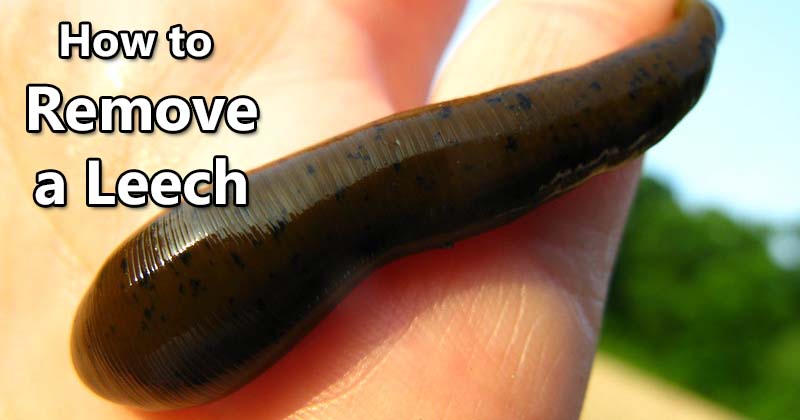
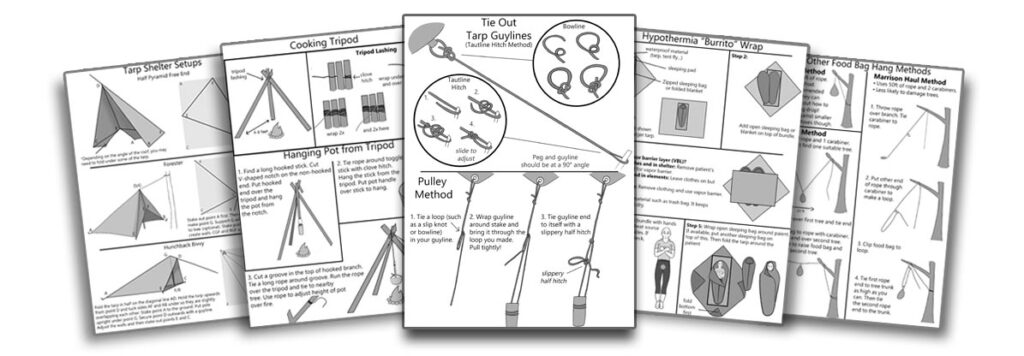
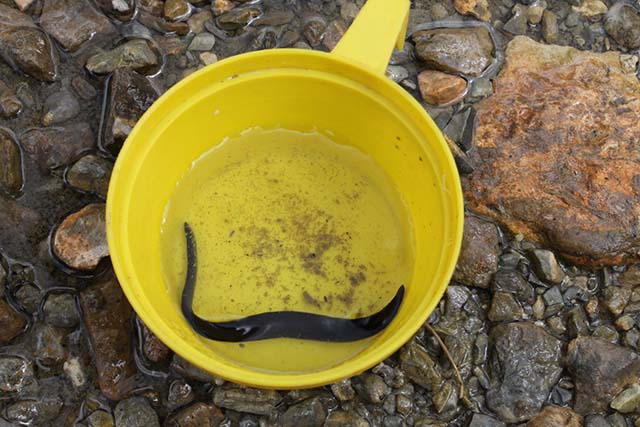
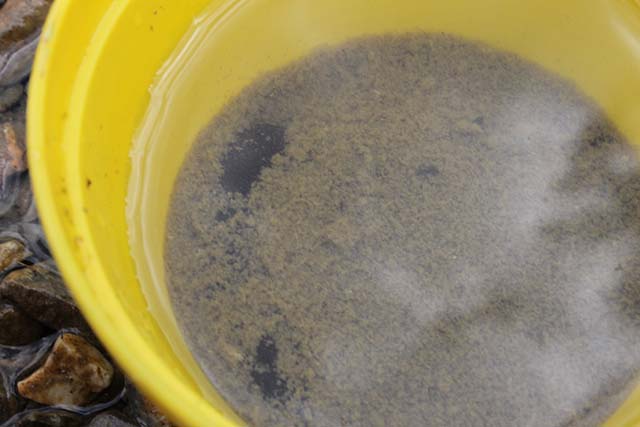
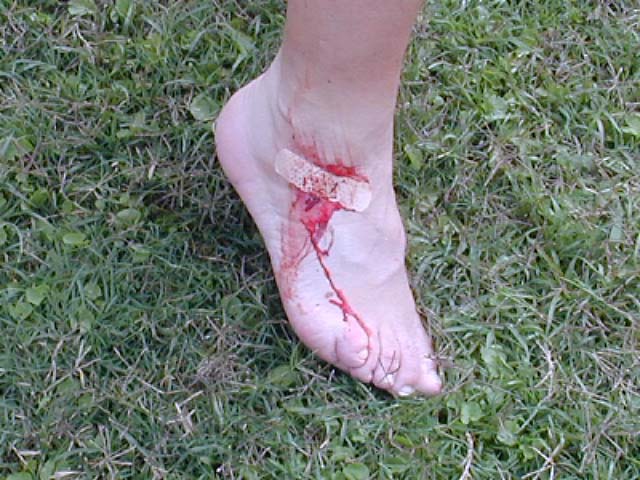
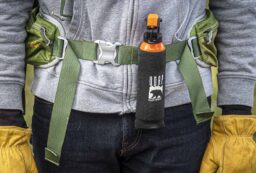
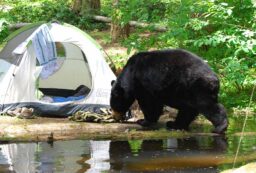
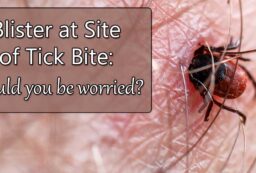







6 Comments
Stu Caunce
May 1, 2023 at 3:40 pmAbout 40 years ago we were widerness camping by a lake in Algonquin Park which had leeches. We were carefull to check each other after swimming but one attached to me between my big toe and it was missed for maybe a day or two. I thought I had an itch but my daughter finally saw it and i sort of shaved it off with a knive. When i squeezed the area out came a number of baby leeches along with my blood. It freeked my daughter right but I had no lasting problems from the wound,
Diane
May 2, 2023 at 3:47 pmAhhh! That’s terrifying! Glad you didn’t have any lasting problems on the wound (though I might have lasting trauma from it, :D).
Charlie ‘n Rosie
June 5, 2023 at 11:55 pmOh thank you, Diane. Very good advice. Wish we had read this sooner. Also, this gives us a great topic for dinner conversations. Thank you. Thank you. Thank you.
Diane
June 11, 2023 at 8:43 pmYou must have really fun dinner conversations 😀
Dar
August 4, 2023 at 2:09 pmthank you for this article! You just save me a trip (hopefully) to the doctor. I unknowingly ripped one off of me & after two weeks the area is still swollen from the jaws. I guess I need more time for my body to do it’s work.
Diane
August 6, 2023 at 8:27 pmGlad this info was helpful and I bet everything will be okay! But maybe take photos of the wound every day. In my experience (at least with Lyme disease from a tick bite, never had a doctor visit because of a leech), doctors can be somewhat idiotic. If there ends up being a problem because of the bite, it might be smart to have pictures to show the doctor.